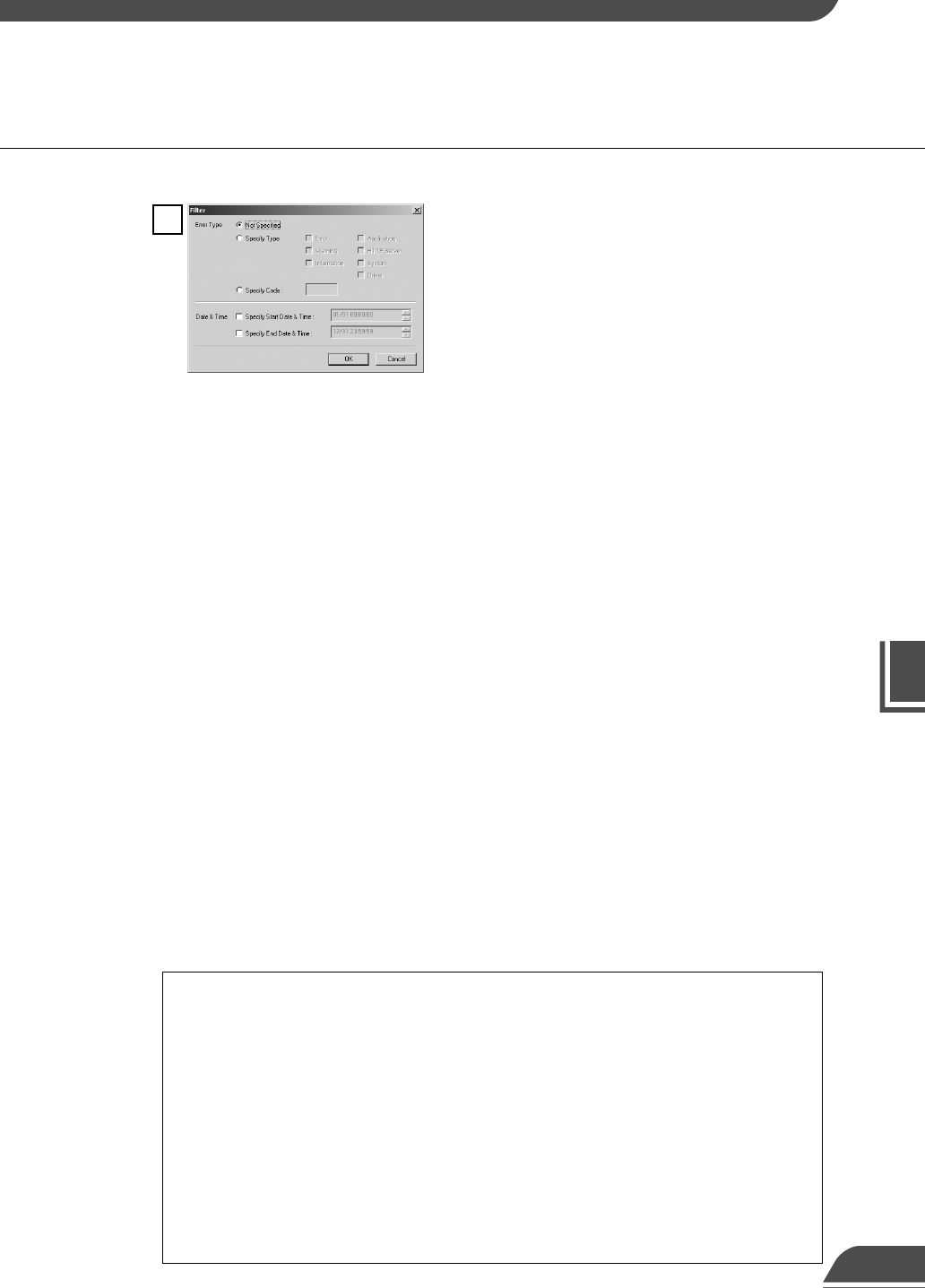
VB Administration Tools
4
87
Log Viewer
The Filter dialog box appears. Set the following
selection criteria and click OK to display only the
logs that match those criteria. If filtering is not
required, click Cancel.
2
[Error Type]
If logs are to be filtered according to type of error, select Specify Type or Specify
Code; if not, select Not Specified.
● Specify Type
– Specifying the levels of the logs
From Error, Warning, and Information, select the error levels to be displayed.
– Specifying the modules that output the logs
From Application, HTTP Server, System, and Driver, select the output source
modules to be displayed.
● Specify Code
Specify the error code of the logs. The error codes of the logs are compared to the
characters that are entered and only logs with matching error codes will be
displayed. For example, if "A0" is entered, logs whose error codes start with "A0" will
be displayed.
[Date & Time]
● Specify Start Date & Time
Logs generated after the specified date and time can be displayed by selecting this
item and entering a date and time.
● Specify End Date & Time
Logs generated before the specified date and time can be displayed by selecting
this item and entering a date and time.
e
Tip
"Application", "HTTP", "System", and "Driver" correspond to the log
messages list (→ P.146).
● Application: Log messages related to applications (→ P.146)
These log messages refer to applications such as WebView and picture
recording.
● HTTP: Log messages related to the HTTP server (→ P.150)
These log messages refer to the system’s HTTP server.
● System: Log messages related to the system (→ P.152)
These log messages refer to the OS, network, or firmware upgrades.
● Driver: Log messages related to the driver (→ P.150)
These log messages refer to the PCMCIA.
